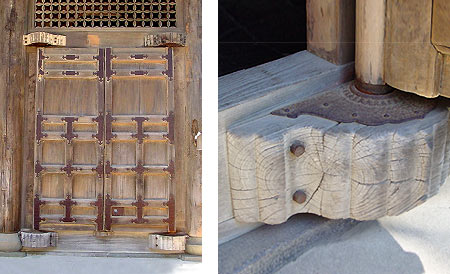|
||
 |
||
2@Nezutsumi ͺο (root wrap), are also called waraza or *nemaki ͺͺ. They are protective devices that are placed around the base of a pillar to help prevent decay where the wood and ground meet. These are seen especially on shrine gates *torii Ή, of the *inari torii ξΧΉ, *hachiman torii ͺ¦Ή, and *kasuga torii tϊΉ.

1j Kenchouji
Butsuden ·§a (Kanagawa)
@
(C)2001 Japanese Architecture and Art Net Users System.@No reproduction or republication without written permission.
fΪΜeLXgEΚ^ECXgΘΗASΔΜRecΜ³f‘»E]ΪπΦΆά·B

